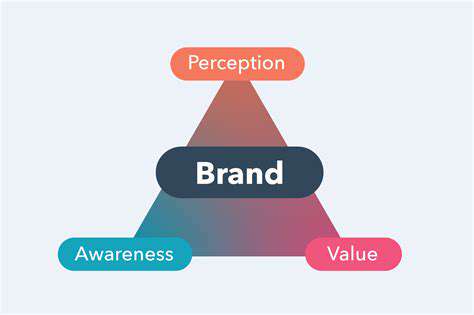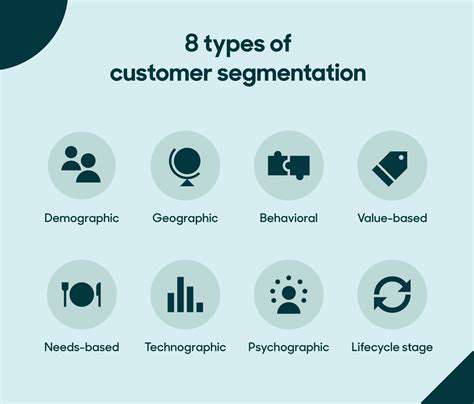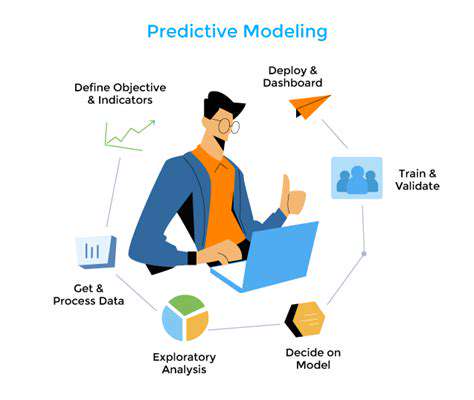Measuring Brand Sentiment and Perception

Leveraging Social Media Listening for Real-Time Insights
Identifying Key Social Media Platforms
Understanding which social media platforms are most relevant to your brand and target audience is crucial for effective social listening. A comprehensive strategy should consider the demographics and interests of your audience. For example, if your target demographic is primarily Gen Z, platforms like TikTok and Instagram might be more important than LinkedIn. Analyzing the conversations happening on various platforms allows you to pinpoint the most influential channels for your brand's message.
Careful consideration of competitor activity on each platform is also important. Monitoring their engagement and sentiment can reveal valuable insights into how your brand stacks up against the competition and identify opportunities for improvement.
Defining Specific Search Terms and Keywords
Developing a robust set of search terms and keywords is fundamental to effective social listening. These terms should go beyond just your brand name, encompassing relevant hashtags, industry jargon, and competitor names. By utilizing a diverse range of keywords, you can gain a broader understanding of the conversations surrounding your brand and industry. This comprehensive approach allows you to capture a wider range of opinions, feedback, and potential issues.
Regularly evaluating and refining your keyword list is essential to ensure continued relevance. As trends evolve, new conversations emerge, and the social landscape changes, adapting your keywords ensures you remain attuned to the ongoing dialogue.
Analyzing Brand Mentions and Sentiment
Monitoring brand mentions is critical to understanding public perception. This involves tracking how often your brand is discussed and analyzing the context of these mentions. Tools for monitoring brand mentions can help you identify patterns and trends in the conversations surrounding your brand. This analysis is fundamental in determining the overall sentiment associated with your brand.
Sentiment analysis, a critical component of social listening, allows you to gauge the emotional tone behind these mentions. Is the discussion positive, negative, or neutral? Understanding the sentiment allows you to quickly address any negative feedback and proactively engage in positive conversations.
Tracking Key Performance Indicators (KPIs)
Establishing clear Key Performance Indicators (KPIs) is essential to measure the success of your social listening efforts. Metrics like the volume of brand mentions, the percentage of positive versus negative mentions, and the rate of engagement with your brand's posts provide quantifiable data to evaluate the effectiveness of your strategies.
Monitoring and tracking these KPIs regularly helps you understand the impact of your social media presence and identify areas for improvement. This data-driven approach allows you to make informed decisions about your social media strategy and optimize your brand's presence.
Utilizing Social Listening Tools
Leveraging dedicated social listening tools is crucial for efficient and comprehensive analysis. These tools offer sophisticated capabilities for monitoring conversations, identifying trends, and analyzing sentiment across various platforms.
These tools help you stay informed about the ongoing conversations that impact your brand, allowing for swift responses to emerging issues and timely engagement in positive discussions. They facilitate a deeper understanding of public perception, which is crucial in adjusting your strategies accordingly.
Responding to Feedback and Addressing Concerns
Social listening is not just about collecting data; it's about acting on it. Actively responding to customer feedback and addressing concerns is critical for building a strong brand reputation and fostering positive relationships. This includes promptly addressing negative comments and engaging with positive feedback, showing your audience that you value their input.
Identifying Emerging Trends and Opportunities
Social listening provides a unique opportunity to identify emerging trends and potential opportunities. By monitoring conversations, you can gain insights into evolving consumer preferences, emerging needs, and new market trends. This allows you to adapt your strategies in a proactive manner and capitalize on emerging opportunities.
This proactive approach is essential for staying ahead of the curve, maintaining a competitive edge, and continually innovating your brand's offerings. It can lead to a deeper understanding of your customers' needs and preferences, ultimately enhancing your brand's overall performance.
Read more about Measuring Brand Sentiment and Perception
Hot Recommendations
- Personalizing Email Content with User Behavior
- Geofencing for Event Attendance Tracking
- Reputation Management on Social Media
- UGC Beyond Photos: Videos, Testimonials, and More
- The Future of Data Privacy Regulations
- Accelerated Mobile Pages (AMP) Benefits and Implementation
- The Future of CRM: AI and Voice Integration
- Google Ads Smart Bidding Strategies: Maximize Value
- Common A/B Testing Pitfalls to Avoid
- Local SEO Strategies for Small Businesses










